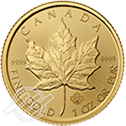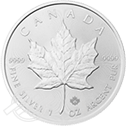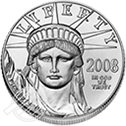First Quarter Demand for Gold Remains Robust
The most recent World Gold Council Gold Demand Trends Report has shown that demand for gold is picking up right where it left off in 2013. Q1 demand for gold was 1074 tons, which was nearly unchanged on a year-over-year basis. According to the report, quarterly average demand trends remain intact according to data established over the last five years.
Let’s take a closer look at some specific segments of this demand to see what is driving gold:
JEWELRY DEMAND
Jewelry is the most significant component of overall demand. The first quarter of 2014 saw the strongest demand for jewelry since 2005. At a total demand of 571 tons, the demand for jewelry rose three percent from the first quarter of last year. In 2013 China became the largest global market for gold demand, and in the first quarter of this year China saw a 10 percent increase in jewelry demand.
CENTRAL BANK BUYING
Central banks continued to buy gold and purchased 122 tons of gold in the first quarter of this year. This buying by central banks has been going on steadily for some time now, and in fact Q1 represents the 13th consecutive quarter that central banks have been net buyers of gold. While 122 tons purchased in Q1 represents a slight drop from Q1 of last year, it would appear that central banks are likely to continue buying gold and diversifying their assets.
CONSUMER DEMAND
At 853 tons, consumer demand for gold was lower than it was for much of last year. The five year quarterly average for consumer demand, however, is 850 tons and therefore the Q1 figure is right in line with quarterly averages. The fact that consumer demand in the first quarter is down from last year should not come as a surprise, as 2013 saw big demand for gold as prices dropped and fell below the $1200 level.
Some of the key findings of this report include:
- Investment demand for gold was 282 tons, and was slightly lower than the 288 ton demand seen in Q1 of last year. Demand for gold bars and gold coins saw a significant drop from last year as well.
- First quarter central bank net purchases were once again significant.
- ETF outflows were almost insignificant, and represent only a small fraction of the outflows seen in the first quarter of last year.
- Demand for gold for jewelry rose 3 percent from the first quarter of last year, demonstrating that consumers continue to be the most significant driver of gold.
KEY STATISTICS
- The first quarter average gold price stood at $1293 per ounce.
- Gold demand in value terms was $45 billion for the first quarter, a 21 percent drop from the first quarter of last year.
- First quarter gold demand of 1074 tons was essentially unchanged from the first quarter of last year which came in at 1077 tons.
- Jewelry demand in China rose 10 percent while demand in India saw a nine percent drop.
- First quarter mine production rose six percent over the first quarter of last year to 721 tons.
- ETF outflows slowed to only .2 tons.
World Gold Council. (May 20, 2014). Q1 2014 gold demand shows core fundamentals remain robust. Retrieved from www.gold.org
Tags: 401k gold, add gold to my ira, best gold, best gold companies, best gold dealers, best gold ira, best way to buy gold, best way to invest in gold, bullion for retirement, buy silver, buying gold bullion, conver 401k to gold.gold 401k, covert ira to gold, current gold price, gold 401k, gold backed ira, gold bullion ira, gold coin ira, gold coins, gold investment company, gold ira, gold ira custodians, gold ira investments, gold price today, gold rollover, gold transfer, invest for retirement, ira companies, ira gold, price of gold take, protect, retire, safe


